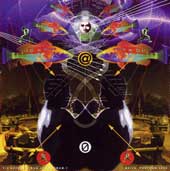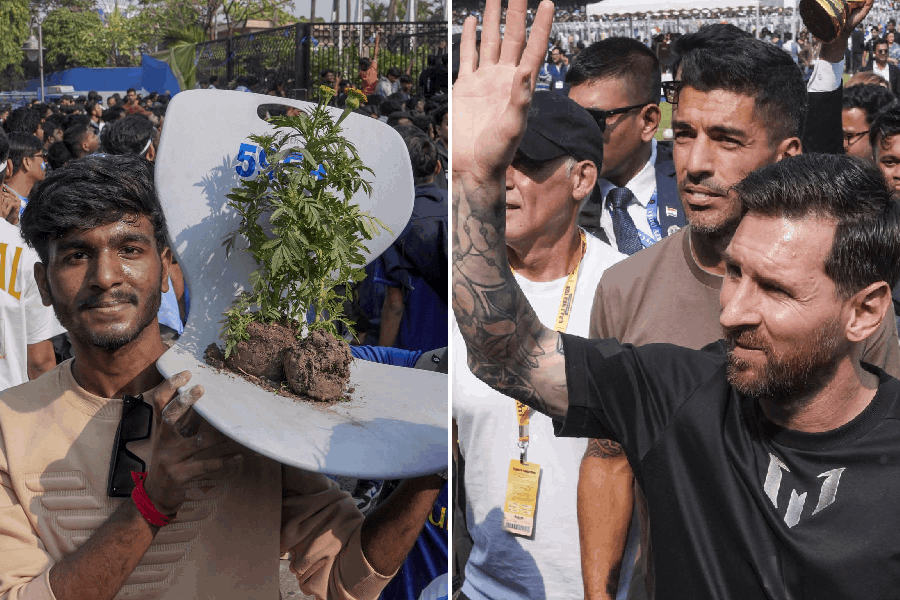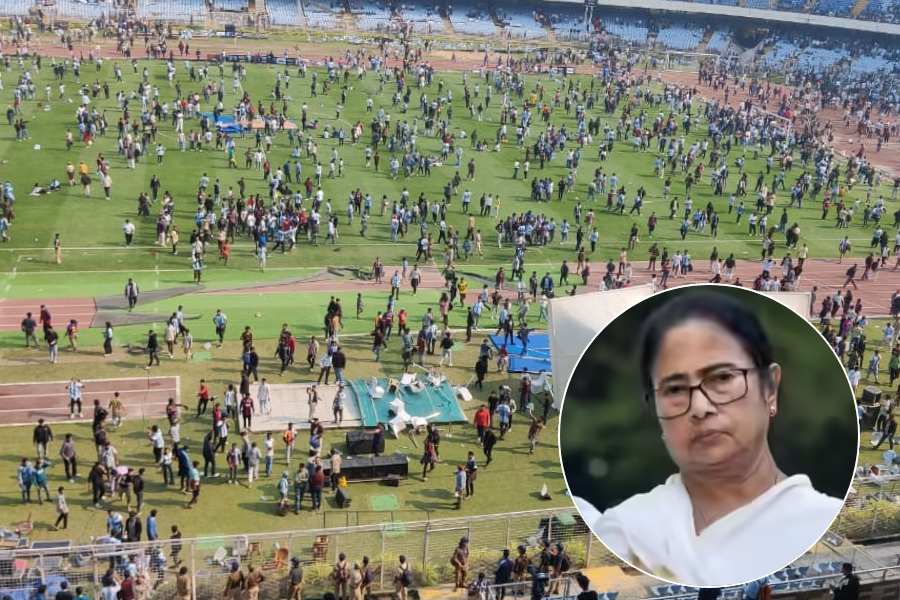 |
| One of the artworks on display in Ranjit Hoskote?s exhibition entitled Strangeness |
?For me, the act of curating an exhibition is of exactly the same intensity and importance as writing a poem or conceiving an installation,? said Ranjit Hoskote, Mumbai-based, poet, art theorist and independent curator.
Hoskote has curated 12 exhibitions in the past 13 years, at venues like Japan Foundation, Tokyo, and the National Gallery of Modern Art (NGMA), New Delhi. With the Jehangir Sabavala show still on at the NGMA, Hoskote was in the city to inaugurate his latest project, Strangeness, at Anant Art Gallery.
Taking a break, Hoskote said he believes we should celebrate India?s ?hybridity, its diversity, its sheer ?manyness?, rather than an imaginary ?sameness??. He said he conceived Strangeness ?as an exhibition that would demonstrate an intriguing pattern of conceptual and formal interests among post-colonial Indian artists across generations.?
In terms of sheer age, the 11 artists on view range from ?the distinguished painter Krishen Khanna? to ?the young painter Viraj Naik?. There is also ?a gamut of media?, including paintings in oil, tempera, watercolours, graphics, photography, mixed media, assemblages and sculpture-installation.
?With Strangeness, I wanted to side-step the grand narratives of history and look at a pattern of obsessions ? at the quirky and the quixotic, the eccentric and the surreal as subjects of artistic inquiry. And to see how artists from across well-defined positions had explored these areas.?
As a curator, Hoskote recognises his primary challenges as those of conceiving a space arranged with artworks, finding out ways to hold it together, examining what connections are being proposed among art works and creating ?a conversation?. To this end he often uses ?sight lights? which attempt to guide the ?axis and angles along which the acts of viewing will take place.?
He rues that ?very few exhibitions in India are actually curated.? A curator, he points out, is Latin for ?one who cares?. ?But many people today only want to be called curators, without refining the practice of curating ? they don't really care, either about artworks or artists, or the act of viewing, or the nature of viewing spaces.?
He says: ?It is simply not enough to plonk a few art objects in a gallery and hope for the best. What is the context that is being created around these art objects? What are the means adopted to bring artworks and viewers into a space of shared, or at least, shareable meaning? Such are the questions many people in the Indian art world have yet to address.?
The problem, he says, is in the ?absence of a knowledge base that can sustain and inform the booming Indian art market?.










